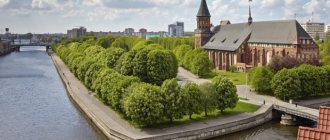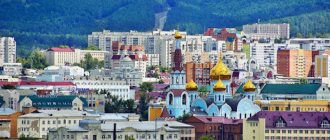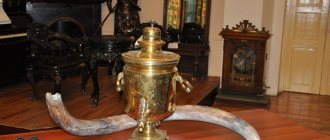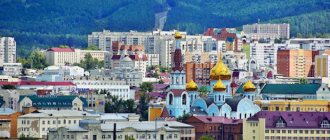- Reports and messages
- Miscellaneous
- Chita city
According to official data, the city was founded in 1887.
Originally there was a prison here. For 70 years, the city hardly developed, although it was the center of the Trans-Baikal region. But as soon as they began to build the Trans-Siberian Railway, the city began to grow rapidly. At the moment, the city is the capital of the Trans-Baikal Territory. The city's culture is adequately represented by its sights. On the main square of the city, before the revolution, there was a Cathedral built in 1909. After the revolution, a cinema was set up in the cathedral, and on April 23, 1936, the cathedral was blown up. The square lay in ruins for a long time, only in September 1937 they were dismantled, and by October the square acquired the appearance in which it stood until the seventies of the last century.
There are many museums in the city. The local history museum has been operating in the city for over a hundred years. In Chita there are open museums such as the Regional Art Museum, the Decembrist Museum, and many others with interesting exhibitions.
The city is located in a beautiful area. Mountain ranges extend around and through the city. The Kadalinsky Gate facility is open to tourists; it is located in the spurs of the Yablonovy Ridge. From them you can see the entire city, Lake Kenon and the Apple Ridge. The city is unique in that it houses temples of three religions on one hill.
Some attractions have iconic significance.
In 1776, when there was a prison on this site, the Decembrists were sent here. They erected a small temple, which became a monument of wooden architecture of federal significance. Until 1971, it was forgotten and if it had not been for its transfer to the local history museum, the temple would have perished.
Another architectural monument of federal significance is the Shumovsky Palace. The façade of the mansion is decorated with elegant sculptures, openwork bay windows, elegant balconies, and delightful stucco moldings. Currently, the headquarters of the FSB is located here.
If we talk about the architectural sights of Chita, then we need to remember the mansion built at the beginning of the 20th century. It is L-shaped, with a bay window crowned by an elegant dome. The mansion looks extravagant.
In the spring of 2011, a monument appeared in the city, which became popular among newlyweds; they visit it after the registry office. It stands in the park of the same name “Love and Fidelity”.
Option No. 2
Chita is the capital of Transbaikalia, located in the southeast of Siberia. Chitinskaya Sloboda was founded back in 1653, but received city status only in 1851. In 2021, the population of Chita was 349 thousand people. In 1998, Chita became a member of the Association of Siberian and Far Eastern Cities, and in 2003 - the Union of Historical Cities.
Chita belongs to the Yakut time zone. The climate is sharply continental. The average temperature in January is -25˚C, in April – +2˚C, in July – +19˚C, in October – 0˚C. The lowest recorded temperature was -50˚C, the highest was +43˚C. Chita is also recognized as one of the sunniest Russian cities. The ecological situation in the city is extremely unfavorable. One of the main sources of pollution is cars.
There is Kadala Airport in Chita, through which you can get to Irkutsk, Blagoveshchensk, Khabarovsk and many other cities. The federal highways “Baikal” and “Amur” pass through Chita.
Transbaikal State University is the largest university in the region. It trains personnel for industrial enterprises, government organizations and law enforcement agencies. The university operates a center for research in the field of ethnology and anthropology. The Chita Medical Academy consists of 5 faculties; the Research Institute of Medical Ecology operates on its basis.
In 1981, the Institute of Natural Resources, Ecology and Cryology was formed. At this institute there are laboratories of ethnoecology, economic and social geography and some others.
The Transbaikal Local History Museum has an unusual branch - the Church of the Decembrists. It is located in the no longer active St. Michael the Archangel Church. Previously, exhibitions dedicated to the history of Chita were located here.
The Transbaikal Drama Theater was opened in 1939. Today his repertoire includes such performances as “The Seagull” by Chekhov, “The Picture of Dorian Gray” by Wilde and “Transbaikal Quadrille” by Gurkin.
The zoo in Chita was opened in 1994. The basis for the zoo was the living corner at the Palace of Pioneers. Animal species found here include the Amur tiger, white-naped crane, white-naped hedgehog and Siberian roe deer.
Chita is the venue for various competitions. For example, since 2004, the choreographic festival “Young Talents of Transbaikalia” has been held here annually, and since 2011 – the Transbaikal International Film Festival.
The socio-political newspaper “Zabaikalsky Rabochiy” is published daily. It began to be published in 1905. The newspaper is distributed not only in Chita, but also in all regions of the Trans-Baikal Territory.
Chita
Video: Chita
History of Chita
Chita from a bird's eye view
The city got its name in honor of the small Chita River, which becomes shallower every year. The etymology of the word is not fully understood: perhaps it was borrowed from the languages of local tribes, where it means “birch bark rug”, “clay, black earth” or “fortress”. The first Russian settlements, winter quarters for travelers, appeared here in the middle of the 17th century. In 1687, a raft site appeared on the site of the modern city, where rafts were made for further rafting along the river. Ten years later, a church was built, permanent residents settled, and the settlement acquired the status of a settlement.
In 1711, the settlement was renamed the Chita fort - this was the name for the fortifications of this period, although in fact there were never protective walls around Chita. The population of the prison grew extremely slowly; by the time of the trial of the Decembrists there were only a few dozen residents. Paradoxically, the exile gave impetus to the development of the city - the military came here, trade and consumer services began to develop.
In 1851, Chita received city status; at the end of the 19th century, it turned into a major transport center thanks to the construction of the Trans-Siberian Railway. In the twentieth century, after the revolution, Chita for 3 years was the capital of an unrecognized state - the Far Eastern Republic, then became part of the USSR as the capital of the Chita district and region. In 2008, the region expanded its borders, and Chita became the center of the Trans-Baikal Territory.
Chapel in the name of St. Alexander Nevsky
Cathedral in the name of the Kazan Icon of the Mother of God
Pedagogical University
Museums of Chita
Due to the historical characteristics of the city, firstly, located close to the borders of the country, and secondly, from the places of serving sentences, there are especially many cultural institutions in Chita related to the history of law enforcement agencies. One of the main museums, ODORA, is opened in the House of Officers. Its 6 halls are dedicated to the history of the Great Patriotic War, including its Far Eastern pages. Some of the exhibits – tanks and large military equipment – are displayed in a nearby park, restored from pre-revolutionary photographs, a favorite recreation spot for townspeople. The museum operates on a non-standard schedule from 8 a.m. to 5 p.m., with a break from 12 p.m. to 1 p.m., and closed on Monday and Tuesday.
Thematically close to ODORA is the Museum of the History of Border Troops, founded in 2000. The Museum of the History of the Trans-Baikal Police is interesting with its exhibition of weapons seized from bandits. The Museum of the History of the Judicial System of the Trans-Baikal Territory is opened in the building of the Central Court.
Church of the Decembrists
Amurskaya Street
The Decembrist Church Museum, operating since 1985, is housed in a wooden church frame, the original building of the St. Michael the Archangel Church built in 1776. During his exile, the Decembrist Ivan Annenkov and the Frenchwoman Polina Goble, who followed him to Siberia, were married here. Another exile in the Decembrist case, Dmitry Zavalishin, also got married in the church. True, he found his wife right on the spot - she was the daughter of a high-ranking local official, the manager of the Chita volost. Zavalishin did not directly participate in the uprising, but sympathized with its ideas and was arrested shortly after the main trials of the instigators. His wife was subsequently buried near the walls of the church. Zavalishin, an active publicist, was tolerated in Chita until 1863, then he was sent into yet another exile in an unexpected direction: there was nowhere to go further to Siberia, so he was forcibly returned to Moscow.
The museum's exhibition includes portraits of exiles, their household items, shackles, furniture and books that belonged to them and their families, and the first editions of convict memoirs. The museum is open every day, except Mondays, from 10 to 18 hours, a ticket costs 130 rubles, for beneficiaries - 90. Every year on December 14, an Open Day is held in memory of the uprising on Senate Square. Every February the museum organizes Decembrist readings.
“Church of the Decembrists” is a branch of the Chita Museum of Local Lore. The most interesting part of the exhibition is objects of decorative and applied art from China and Japan, artifacts associated with the Decembrists, and edged weapons of the 19th century. The museum conducts interactive classes for primary schoolchildren and organizes regular excursions around the outskirts of Chita.
Science museums in Chita
The Mineralogical Museum is famous for samples of lava from Kamchatka volcanoes; the Paleontological Museum in the building of the Chita Technical University houses a collection of fossilized dinosaur eggs from the Gobi Desert and the skeleton of a woolly rhinoceros. The archaeological museum with rich local collections, collected mainly on the hills near Chita, is opened in the building of the state university. An important city site is the Anti-Plague Station Museum, which tells how this terrible disease was defeated.
Sights of Chita
A must-see is the Chita Datsan, a Buddhist religious building opened in 2010. In the bright building, designed in the traditional style of churches, prayer services, lectures are held, and religious holidays are celebrated.
The Chita hippodrome in the village of Zarechny is located half a kilometer east of the Anti-Plague Station. Local breeds of horses are bred here - short, covered with thick hair in the winter. Horse breeding in the region has reached such a level that horses are exported to Mongolia.
Architectural monuments
In Chita, two types of historical buildings have been preserved and are maintained in good condition: simple log buildings from the period of exile of the Decembrists and elegant stone and wooden houses of the early 20th century, designed in the Art Nouveau style. Among the first is the house of the wife of the Decembrist Naryshkin - a modest building in which the aristocrat herself ran the household.
An outstanding architectural monument of the Art Nouveau era is the estate of the photographer Konovalov, built in 1906. A two-story stone house with spiral volute decorations on top and a one-story wooden house have been preserved - it is easy to recognize by the same waves above the entrance. The Vtorov Passage of 1911 is a pre-revolutionary trading establishment, now occupied by all kinds of officials. The wooden house of Bergut is notable for its unique decor, not typical for Transbaikalia; the house of architect Nikitin is notable for its complexity of form. One of the most spectacular buildings in the city, the house of the Shumov merchants with richly decorated facades and domes, is now occupied by the FSB. Examples of wooden Art Nouveau are the Timakhovich house with carved fish and the Schilling house with complex decorative paneling.
Panorama of Chita
Botanical Garden of Chita
Due to uncontrolled logging in past years, the city lost its green belt. The Transbaikal Botanical Garden is trying to solve this problem: scientists are developing varieties of flowers and tree species that can withstand harsh climates and sandy soils. The entire collection, including the rose garden, which has been in bloom since April, is kept under glass. The cost of a tour of the greenhouses is 100 rubles. The garden is open on weekdays; on Saturdays, tours are by appointment only.
Chita Zoo
The small zoo began as a children's aquarium club; in 1994, the growing collection was placed in a separate building. Due to financial difficulties, the zoo followed the classic example of the British naturalist Gerald Durrell and assigned sponsor “guardians” to the animals - commercial enterprises, banks or government agencies. Not all specimens have been sorted out yet: there are free Himalayan bears and horned crows. A ticket to the zoo costs 200 rubles for adults, 50 rubles. – for children, additional services – pony riding and feeding of tame animals.
Excursions around Chita
- Many tourists travel from Chita to the village of Aginskoye, famous for its wooden architecture, visiting the main attraction - the Buddhist datsan. The cost of the trip is 990 rubles with an additional fee for lunch and entrance to the datsan.
- From 1,100 rubles you need to pay for a 220-kilometer trip to the Alkhanay National Park with a lama’s cell, Buddhist and shamanic shrines. The route is closed on certain summer days, when the risk of forest fires is especially high and the park is closed to the public.
- An excursion 300 km from Chita to Nerchinsk (from 1,300 rubles) is attractive with a visit to the Assumption Church of the 18th century and the palace of the Butin brothers - local merchants who built an estate in the Moorish-Gothic style in Siberia in the mid-19th century. Now it houses the Nerchinsk Local History Museum.
- An inexpensive but exotic route passes through the Ugdan datsan, located 20 km from Chita, to an ostrich farm.
Leisure
Despite the unfavorable environmental situation within the city, you can find places to relax outside of it. Alkhanay Park offers campsites, cottages and even yurts for long-term stays. The Chameleon rope park, located half an hour east of the center of Chita, conducts group lessons starting from 200 rubles for children over 5 years old, 400 rubles. – for teenagers, 600 rub. – for adults. The park area has been treated for ticks. “Chameleon” is the starting point for rafting, climbing, and orienteering competitions.
Near the southwestern borders of Chita is Titovskaya Sopka, a former volcano in which fragments of the bodies of a mammoth, a woolly rhinoceros, a prehistoric horse and even a bison were found. This is an interesting place for walking: it offers a picturesque view of the city, and primitive paintings are preserved on the rocks. From the east of Chita there are the slopes of the forested Yablonovy Ridge, which stretches across Transbaikalia for 650 km. 35 km north-west of the city there is a unique object on a global scale - Mount Vodorazdelnaya, or Pallas. It is only 1200 m high, the climb along a gentle slope stretches for 15-20 km and is not particularly difficult for a trained tourist, but this is not the value of the mountain. From the top of Vodorazdelnaya you can see streams flowing into the largest rivers of the Asian part of the country - Lena, Yenisei and Amur and feeding 5 seas with their waters.
Precautions for tourists
Preventive vaccinations against tick bites will not be superfluous, but it is still necessary to take all precautions - wear closed clothes in the forest, choose areas treated with poisons for walks. Swimming in the river within the city is strictly not recommended. Lake Kenon, near the western borders of Chita, next to the airport, is also a dubious place in terms of cleanliness, but there is a beach there and even fish can be caught - perch, chebak and carp.
When planning a trip, you need to remember the sharply continental climate with frosty winters and hot, but short, summers that end in early August. There are only 169 sunny days in the Chita year, almost all of them occur in spring and summer.
Accommodation
There are quite a lot of inexpensive accommodation options in Chita. Hotel "Arcadia" is located in the city center, a 10-minute walk from the railway station. At the hotel you can relax in the sauna with hot tub, and watch performances at the Regional Drama Theatre, which is a 2-minute walk away.
Other accommodation options that have earned positive reviews from travelers: the Panama City Hotel, where 2 hotel restaurants serve Chinese and European cuisine, the Gostiny Dom mini-hotel (pets are allowed), the Moulin Rouge Hotel, where you can relax in the bar and play billiards.
Booking.com
How to get there
Chita Airport receives flights from many Russian cities. Chita is a major transport center of the Trans-Siberian Railway; three federal highways pass through the city - to Ulan-Ude, Khabarovsk and Zabaikalsk.
Calendar of low prices for air tickets
Popular message topics
- Poisonous animals in Russia
Poisonous animals are those animals whose bodies produce toxic substances that are dangerous to humans and other animals. Some toxic substances accumulate in the animal’s body if it lives for a long period of its life. - Floating ships
The body is in the water. That is why two forces act on it at once. One refers to Archimedes' law, and the other force refers to gravity. In addition, each of these forces will act differently on this body. Gravity can act normally - Explosions Explosions
are one of the most common causes of emergencies. They are rarely without environmental, social and economic consequences.
Religion
In 1776, on the site of a burnt wooden church in the Chita fort, the Archangel Michael Church, also wooden, was built. Until 1727, the parish was under the jurisdiction of the Tobolsk see, then it became part of the newly formed Irkutsk diocese.
In 1862, the Chita Missionary School was opened. On June 3, 1879, the center of the Selenga Vicariate of the Irkutsk Diocese was moved from the Posolky Transfiguration Monastery to Chita. In 1886, the Chita Intercession Monastery was founded. Since 1894, the city became the center of the independent Transbaikal and Nerchinsk diocese. In 1895, the Chita Diocesan Women's School was opened. In 1900, a religious school was transferred to Chita from Nerchinsk. From the same year, the Transbaikal Diocesan Gazette was published.
In 1911, there were 18 Orthodox churches, 4 chapels, a Roman Catholic Church in the name of St. Apostles Peter and Paul (since the 1870s), mosque, synagogue, Buddhist datsan (since 1899, burned down in 1914 under unclear circumstances). In 1913, construction of the Alexander Nevsky Cathedral was completed. In 1917, a Baptist meeting house was built.
On February 16, 1918, the Bolsheviks established themselves in the city and began to pursue their usual policy towards the Church. Having tried to seize the documents of the Ecclesiastical Consistory and having received an unequivocal refusal, they decided that “the local authorities could consider such an attitude of the clergy as the beginning of active actions against the existing government” [6]. The clergy who resisted the robbery of the consistory archive were arrested. On June 19, 1918, seeing no other way to help the imprisoned priests, the laity decided, trusting only in God’s help, to move to the prison with prayer in a procession of the cross. On the street Kamchatskaya had a police chain posted on her way to the prison. After the Orthodox Christians walking with banners and icons refused to stop, they opened fire. Several people were injured, and one of the participants in the procession was killed.
In 1922 - 1929, Chita was the center of the Transbaikal Renovation diocese. By 1924, not a single Orthodox church remained in the city. Subsequently, the department of the Orthodox Transbaikal diocese was located in the Kazan Cathedral, and after it was transferred in the spring of 1929 to supporters of the Gregorian schism, in the Archangel Michael Church. The late 1920s and early 1930s were marked by mass church closures. From March to November 1931, a trial was held in the city in the case of a “counter-revolutionary monarchist organization”, the head of which the OGPU identified Bishop Eusebius (Rozhdestvensky) (who was by that time Archbishop of Shadrinsk). 238 people were involved in the case. Many of them were shot, many were thrown into concentration camps or sent into exile. In 1936, the Alexander Nevsky Cathedral was blown up. Opened in 1945, the Chita Resurrection Church remained the only one operating on the territory of the current Chita diocese until the 1990s.
In the 1960s, the destruction of the Old Chita Cemetery began. In the 1970s, St. Andrew's Bishop's Church was destroyed, and the Archangel Michael Church on Kenon was destroyed.
Since 1994, Chita has been the cathedral city of the Chita and Transbaikal diocese. A significant event was the consecration of the new Kazan Cathedral in 2004.
Since 2002, the Roman Catholic parish of the Holy Apostles Peter and Paul has been operating in the city. In 2010, Chita became the second Russian city after St. Petersburg to open a Buddhist datsan.
On September 12, 2015, a monument to the Holy Blessed Grand Duke Alexander Nevsky was unveiled on the station square of the city.
Monasteries
- Pokrovsky (inactive)
- Uspensky (male)
Temples
- Alexander Nevsky Cathedral (exploded)
- Alexander Nevsky, chapel on Titovskaya Sopka
- Alexandra the Martyr, at the women's gymnasium (inactive)
- Andrew the First-Called, at the bishop's house (destroyed)
- Antonievsky, at the men's gymnasium (inactive)
- Presentation of the Most Holy Theotokos into the Temple, at the Diocesan Women's School (inactive)
- Resurrection of Christ
- All Saints
- St. George the Victorious, chapel
- Elijah the prophet, cemetery
- Innocent of Moscow
- Innocent of Irkutsk (?), at the missionary school (inactive)
- Kazan Icon of the Mother of God, Cathedral
- Luke Krymsky
- Michael the Archangel
- Michael the Archangel, on Kenon (inactive)
- Nicholas the Wonderworker
- Nicholas the Wonderworker, in Peschanka
- Nicholas the Wonderworker, at the vocational school (inactive)
- Peter and Paul, at the bishop's house (inactive)
- Transfiguration of the Lord
- Transfiguration of the Lord, prison (inactive)
- Nativity of John the Baptist, at st. Chita I
- Sergius of Radonezh
- Our Lady of Sorrows, cemetery (inactive)
- Saint Terenty, camp (inactive)
- Three Saints, at the teachers' seminary (inactive)
- Trinity Life-Giving, on the Island (inactive)
Winter
The climate of Chita in winter is quite harsh; in January the average air temperature is -25.2 degrees. Although in 1892 the temperature was recorded at -49.6 degrees.
Winter lasts about 177 days, starting as early as mid-October and ending by April 10. There is little snow in the city, and thaws occur very rarely. It is in this locality that one can observe a temperature inversion, characterized by an increase in temperature at altitude, as a result of which smog is often observed in the city. February is characterized by strong winds.
Literature
- Encyclopedic Dictionary. - St. Petersburg: Brockhaus and Efron Publishing House, 1904. - T. 40.
- Popov A.I. City of Chita. Description, guide and reference book. - Chita, 1907.
- All Chita and Transbaikalia: Trade and industrial directory. - Chita, 1923.
- Chita - 125. Recommendatory decree. lit. to the 125th anniversary of Chita as a regional center / Compiled by: G. N. Galkova, V. F. Balabanov, V. G. Maltseva. - Chita, 1976.
- Dvornichenko N. E. Guide to Chita. Sights, monuments and memorable places. - Irkutsk, 1981.
- Climate of Chita / Ed. Ts. A. Shver, I. A. Zilbershteina. - L., 1982.
- Kradin N.P. Russian wooden architecture. - M., 1988.
- Chita: general geographical map Scale 1:200,000. - Sverdlovsk, 1991.
- Cities of Siberia: Encyclopedia. - Novosibirsk, 1994.
- Nemerov V. Chita. Story. Memorable places. Fates. - Chita, 1994.
- Chita. City in time. — Chita, 2001.
- All Russia. Cities and towns: Encyclopedia. - M., 2001.
- Lobanov V. G. Old Chita. — Chita, 2001.
- Chita. 350 years. Atlas of the city. - Omsk, 2003.
- Chita region and Aginsky Buryat Autonomous Okrug: Atlas. - Novosibirsk, 2006.
What locals say, reviews
The climate of Chita is not suitable for weather-sensitive people, because the city is located at a fairly high altitude, although in a basin. It is because of this that very large changes in atmospheric temperature occur throughout the day.
Despite the global warming trend, there can be frosts in Chita even in summer. In spring, too, frosts return on a regular basis. Therefore, local residents rarely risk farming.
According to reviews, the city is quite cold in winter, and in February the winds blow endlessly. Summer is very short, although warm, with large amounts of rainfall occurring towards the end of the season.
But there is also a positive point - there are a lot of sunny days in the city, almost like in Sochi. The city has 43% more sunny days than, for example, Moscow.
Where is Chita?
Chita is the capital of the Trans-Baikal Territory, which is located in Eastern Siberia, near the slopes of the Yablonovy ridge (in the west) and the Chersky ridge (in the east).
The city lies in the Chitino-Ingoda depression, at the confluence of the Chita River and the Ingoda River. The geographic coordinates of the city are the 52nd parallel north. The approximate population is 350 thousand people. The total area of the city is 534 square kilometers. The highest relief point in the city is 1040 m - Mount Chita. The smallest point is 632 m. Within the city limits there are several lakes: Kenon and Ugdan (at the current time this river is dry). The climate in Chita is sharply continental. Changes in weather conditions in the city are affected by the city's altitude (650 m). The average annual air humidity in Chita is 65-66%, the annual precipitation rate is 350 mm.
The time zone of the city of Chita is MSK+6 (exact time here), the offset relative to Coordinated Universal Time (UTC) is +9.
Chita Airport
The city is home to the Chita International Airport, which has the status of a federal facility. The distance from the city center to the airport is 18 km; The nearest federal highway (Moscow - Vladivostok - Khabarovsk) is located at a distance of 8 km. Airport operating hours are from 5:45 to 17:30, seven days a week. The technical break lasts 1 hour (from 12:00 to 13:00).
The most popular destinations of regular and charter flights: Khabarovsk, Moscow, Yakutsk, Krasny Chikoy, Menza, Irkutsk, Vladivostok, Chara, Yekaterinburg, Blagoveshchensk. The runway capacity of Chita airport is 10 flights per hour. The airport serves aircraft of major Russian and international airlines: Ural Airlines, NordStar, S7 Airlines, Pegas Fly, IrAero, Air China, Aeroservice. Annual passenger traffic is 360 thousand people; annual cargo traffic is 3 thousand tons.
Flag
The flag of Chita is a rectangular panel divided into four elements. The ratio of the width of the flag to its length is 2:3. In the pole part of the flag there is a yellow triangle, adjacent to which are equal-sized horizontal stripes of green, white and red. Where yellow (gold) is a symbol of wealth and justice; red (scarlet) – a symbol of courage, bravery and fearlessness; green is a symbol of hope, joy and abundance; white (silver) is a symbol of purity, perfection and independence.
Summer
The summer climate in Chita is characterized as warm. In the second half the rainy season begins. Summer in Chita is 15 days shorter than the calendar season, starting around June 7 and ending on August 22. In July, the average temperature is +18.7 degrees. However, in 1898, a maximum temperature was recorded - +43.2 degrees. By the way, this temperature is an absolute record for all of Siberia.
In recent years (since about 2013), the atmospheric temperature has been constantly recorded at + 30 degrees, but as soon as the sun sets, the temperature drops almost instantly. That’s why it’s cool at night in Chita even in summer.










